 W
WÅsta Gudbrandsdatter was the mother of two Norwegian kings, King Olaf II of Norway and King Harald III of Norway. The primary source for the life of Åsta is Snorri Sturluson's saga Heimskringla, a 13th-century collection of tales about the lives of the Norwegian kings. In the chronicle, Åsta is described as "generous and high-minded" and as a keen political player and guiding influence on her royal husbands and children. Her parents were Gudbrand Kula and Ulfhild.
 W
WAstrid Olofsdotter was the Queen Consort of King Olav II of Norway.
 W
WDale-Gudbrand is a historical Norwegian person that appears in the Separate Saga of St. Olaf in Snorri Sturluson's Heimskringla. He is said to have lived at the farm in Hundorp in the Gudbrand Valley in the 1100s and to have been the most powerful man in the Gudbrand Valley at that time, with the status of a hersir. He is named in Haakon Jarl's Saga as being allied with Haakon Jarl in his conflict with Harald Greycloak.
 W
WEinar Eindridesson Thambarskelfir was an influential Norwegian noble and politician during the 11th century. He headed the feudal lords in their opposition to Olaf Haraldsson.
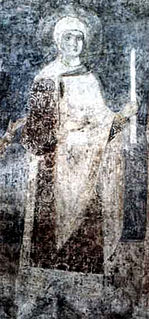 W
WElisiv of Kiev was a Princess of Kiev and Queen Consort of King Harald III of Norway.
 W
WEmma of Normandy was Queen of England, Denmark and Norway through her marriages to Æthelred the Unready (1002–1016) and Cnut the Great (1017–1035). She was the daughter of Duke Richard I of Normandy and Gunnor.
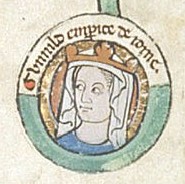 W
WGunhilda of Denmark, a member of the House of Knýtlinga, was Queen consort of Germany by her marriage with King Henry III of the Salian dynasty from 1036 until her death.
 W
WHarald Sigurdsson, also known as Harald of Norway and given the epithet Hardrada in the sagas, was King of Norway from 1046 to 1066. In addition, he unsuccessfully claimed both the Danish throne until 1064 and the English throne in 1066. Before becoming king, Harald had spent around fifteen years in exile as a mercenary and military commander in Kievan Rus' and of the Varangian Guard in the Byzantine Empire.
 W
WHårek of Tjøtta was a Norwegian farmer and local chieftain. He was a son of the skald, Eyvindr skáldaspillir, who ruled from Tjøttagodset. Hårek resided at Tjøtta in Nordland, and had significant influence in the district of Hålogaland. He participated in the Battle of Stiklestad in 1030, where his peasant army defeated Olaf Haraldsson. Six years later when visiting king Magnus Olavsson I also known as Magnus the Good in Trondheim, he was killed by axe in 1036 by rival chieftain Åsmund Grankjellsson, and thus the former king's son got his revenge.
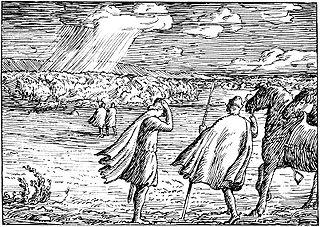 W
WKálfr Árnason was an 11th-century Norwegian chieftain who played a major role both in defeating King Olaf Haraldsson at the Battle of Stiklestad and in bringing back his young son Magnus and raising him to the throne.
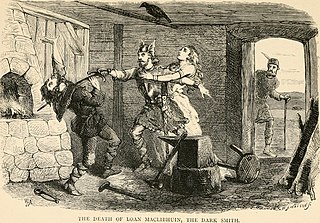 W
WLoan Maclibuin was a legendary Norwegian smith. He was known as "The Dark Smith of Drontheim". He was the seventh son of Windy Cap, King of Norway. The "dark", does not refer to his working black magic, but rather to his swarthy nature.
 W
WMagnus Olafsson, better known as Magnus the Good, was King of Norway from 1035 and King of Denmark from 1042, ruling over both countries until his death in 1047.
 W
WMagnus Olafsson, better known as Magnus Barefoot, was King of Norway from 1093 until his death in 1103. His reign was marked by aggressive military campaigns and conquest, particularly in the Norse-dominated parts of the British Isles, where he extended his rule to the Kingdom of the Isles and Dublin.
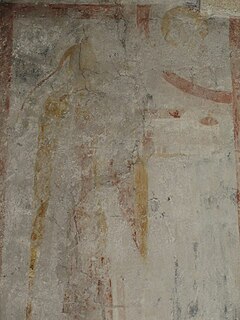 W
WMargaret Fredkulla was a Swedish princess who became successively queen of Norway and Denmark by marriage to kings Magnus III of Norway and Niels of Denmark. She was also de facto regent of Denmark. An English exonym is Margaret Colleen-of-Peace.
 W
WOlaf III, known as Olaf Kyrre, was king of Norway from 1067 until his death.
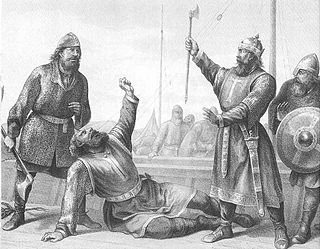 W
WErling Skjalgsson, på Sola, "Rygekongen", Herse/Høvding i Rogaland, was a Norwegian political leader of the late 10th and early 11th century. He has been commonly seen as this period's foremost defender of the historic Norwegian social system. Erling fought for the traditional small, autonomous kingdoms and the þing system, against the reformists of the Fairhair family line.
 W
WThorir Hund was one of the greatest chiefs in Hålogaland. Tore Hund was one of the leaders of the Stiklestad peasant faction opposing Norwegian King Olaf II of Norway, later named St. Olaf. He was reported to have been among the chieftains who killed the king in the Battle of Stiklestad in 1030. He also served in the forces of King Canute the Great on several occasions.
 W
WTryggvi "the Pretender" was a Viking chieftain who lived in the early eleventh century, and came from "west across the sea". His story appears in Heimskringla by Snorri Sturluson, the saga Morkinskinna, and a saga composed by Oddr Snorrason on Olaf Tryggvason.